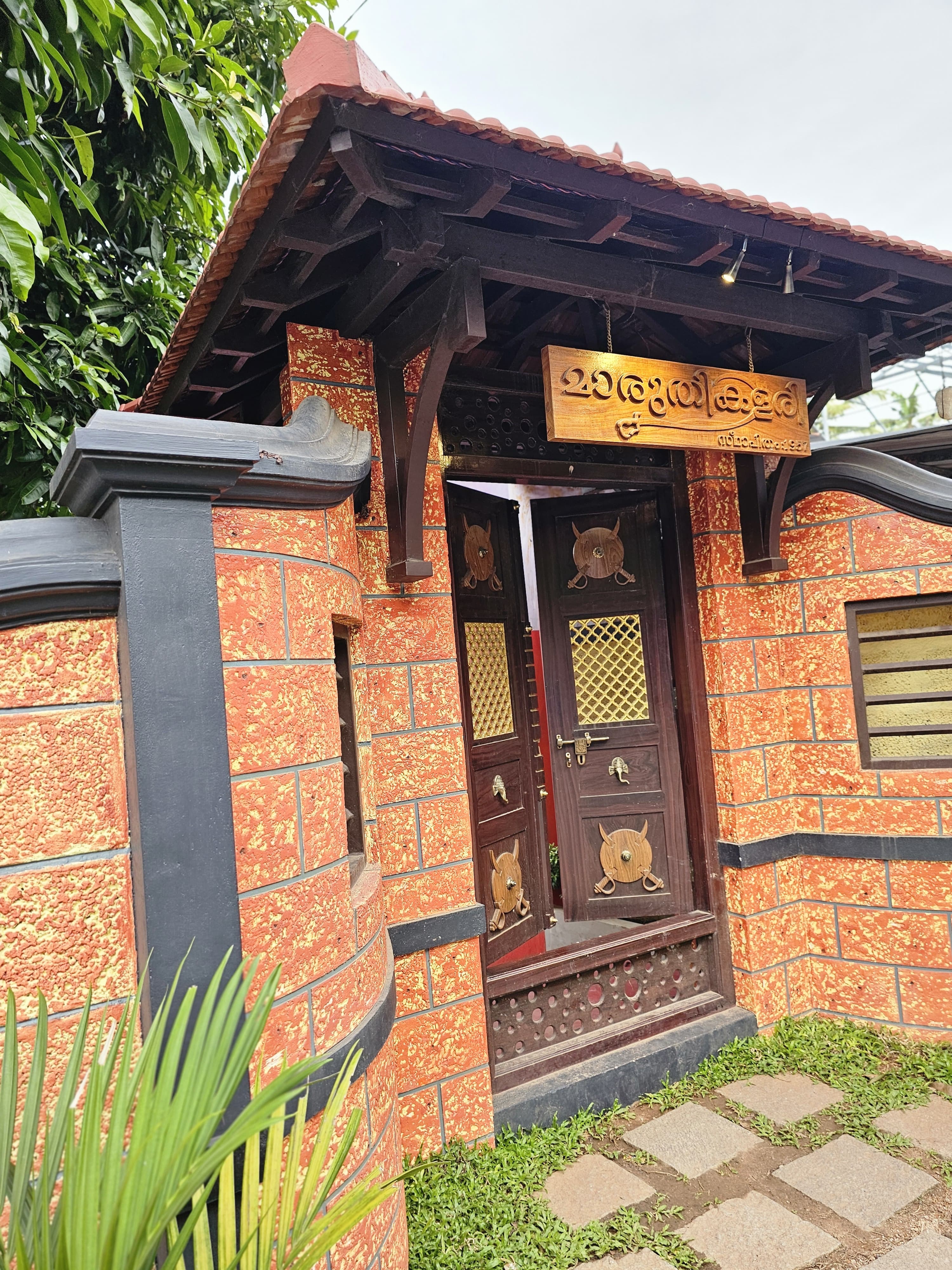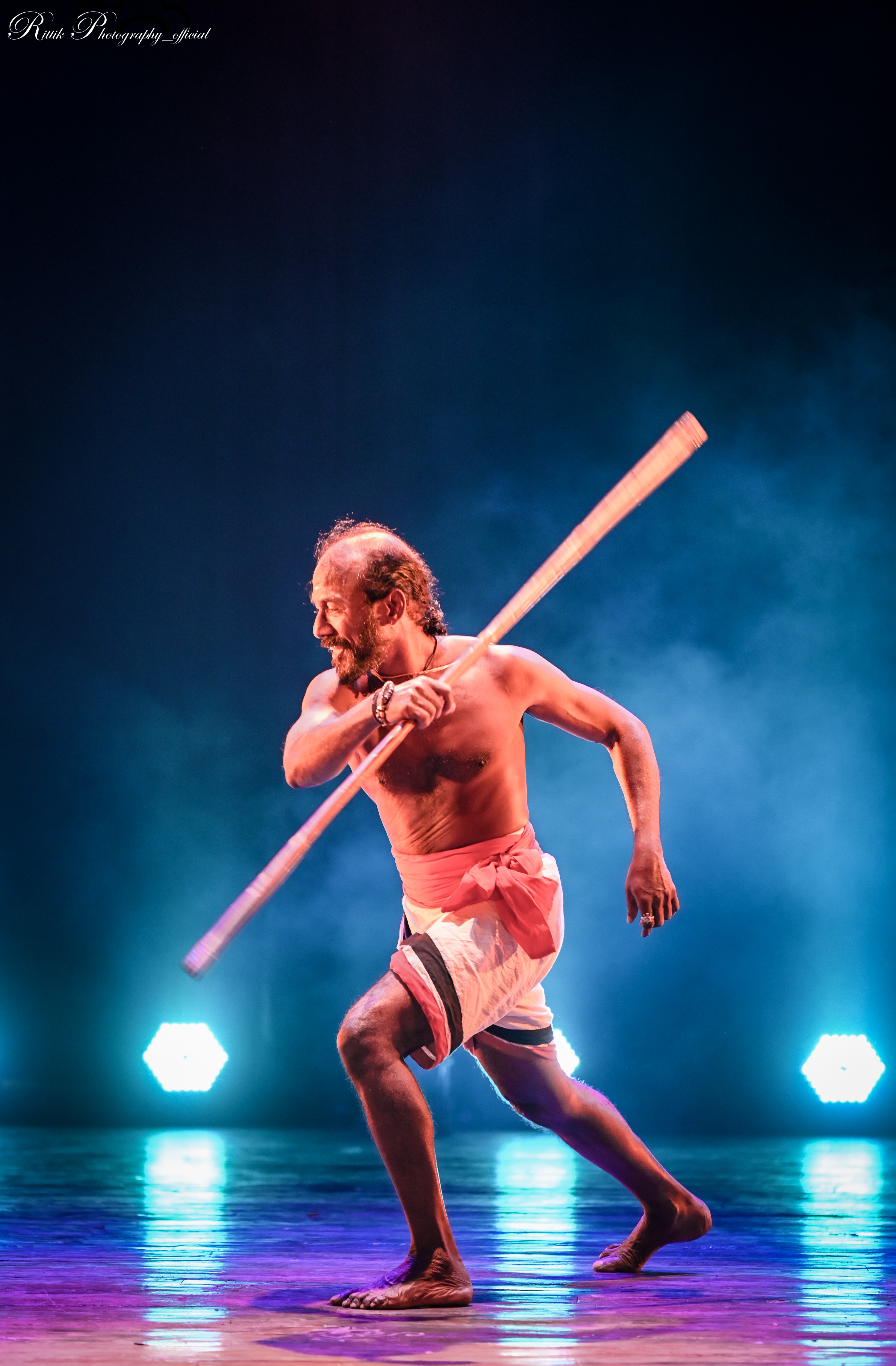Top 10 Kalaripayattu Workshops in Thiruvananthapuram
Kalaripayattu, one of the oldest martial arts forms in the world, originates from Kerala, India. Known for its dynamic techniques and deep-rooted cultural significance, Kalaripayattu encompasses both physical and mental training. Workshops dedicated to Kalaripayattu provide a structured environment for learning and mastering this ancient art. In Thiruvananthapuram, these workshops offer a comprehensive introduction to Kalaripayattu, catering to various skill levels and interests.
-
Maruthi Marma Chikilsa and Kalari Sangham
- Address: Punnakamugal, Thiruvananthapuram, 695032
-
Sree Sankara Kalaripayattu
- Address: Sreekariyam, Thiruvananthapuram, Kerala 695017
-
Kerala Kalaripayattu Center
- Address: Karyavattom, Thiruvananthapuram, Kerala 695581
-
Sree Sankara Kalaripayattu School
- Address: Poojappura, Thiruvananthapuram, Kerala 695012
-
Kalaripayattu Training Center
- Address: Kallambalam, Thiruvananthapuram, Kerala 695605
-
Kalaripayattu Gurukulam
- Address: Manacaud, Thiruvananthapuram, Kerala 695009
-
Kalari Gurukulam
- Address: Kazhakootam, Thiruvananthapuram, Kerala 695582
-
Kalaripayattu Institute
- Address: Vembayam, Thiruvananthapuram, Kerala 695615
-
Kalari Wellness Center
- Address: Vettucaud, Thiruvananthapuram, Kerala 695014
-
Kalari Payattu School
- Address: Chakka, Thiruvananthapuram, Kerala 695024
Kalari training in Thiruvananthapuram
Kalari training centres are dedicated spaces where practitioners of Kalaripayattu, the ancient Indian martial art, can learn and master various techniques. The term "Kalari" refers to a battlefield or training ground, and "Payattu" means combat or fight. These centres provide a structured environment where students can study both the physical and philosophical aspects of Kalaripayattu. The training typically includes a variety of practices such as weapon techniques, hand-to-hand combat, and physical conditioning.
These centres not only focus on martial arts training but also offer a comprehensive experience that includes the study of traditional healing practices, meditation, and the rich cultural heritage associated with Kalaripayattu.
Benefits of kalari training in Thiruvananthapuram
1. Enhanced Physical Fitness
Kalari training involves a range of exercises that improve overall physical fitness. It includes dynamic movements, strength-building exercises, and flexibility training, which contribute to better cardiovascular health, muscle tone, and endurance.
2. Improved Flexibility and Agility
The practice of Kalaripayattu requires and develops high levels of flexibility and agility. Through various stances, stretches, and fluid movements, practitioners enhance their range of motion and improve their ability to move quickly and efficiently.
3. Increased Strength and Stamina
Regular training in Kalari helps build muscular strength and stamina. The rigorous physical activities, including weapon training and combat techniques, contribute to stronger muscles and greater physical endurance.
4. Better Balance and Coordination
Kalari training emphasizes balance and coordination through its complex movements and postures. Practitioners learn to control their bodies in various positions, which improves their overall balance and coordination.
5. Mental Discipline and Focus
Kalaripayattu requires intense concentration and mental discipline. The practice incorporates meditation and mindfulness, helping practitioners develop better focus, mental clarity, and stress management skills.
6. Enhanced Reflexes and Reaction Time
The fast-paced nature of Kalari training improves reflexes and reaction times. Practicing defensive and offensive techniques sharpens the body's response to sudden movements and situations, enhancing overall reflexive abilities.
7. Self-Defense Skills
One of the primary benefits of Kalari training is learning effective self-defense techniques. Practitioners gain practical skills in both armed and unarmed combat, providing them with the ability to protect themselves in various situations.
8. Cultural and Historical Awareness
Kalari training offers insight into the rich cultural and historical heritage of Kalaripayattu. Practitioners gain an appreciation for the art's origins, philosophies, and traditional practices, enriching their understanding of this ancient discipline.
9. Increased Confidence and Self-Esteem
The mastery of Kalaripayattu techniques and the improvement in physical and mental capabilities contribute to greater self-confidence and self-esteem. Practitioners often feel a sense of accomplishment and empowerment through their training.
10. Holistic Health Benefits
In addition to physical and mental benefits, Kalari training incorporates elements of traditional healing and wellness practices. Techniques such as massage and therapy, integral to Kalaripayattu, promote overall well-being and aid in recovery and relaxation.
11. Enhanced Discipline and Perseverance
Training in Kalaripayattu requires dedication, patience, and perseverance. Practitioners develop a strong sense of discipline as they work towards mastering techniques and overcoming challenges, which translates into other areas of life.
12. Community and Connection
Kalari training fosters a sense of community among practitioners. Training centers often create supportive environments where individuals share a common interest, build relationships, and work together towards personal and collective goals.
Features of kalari training in Thiruvananthapuram
1. Traditional Techniques
Kalari training incorporates a range of traditional combat techniques, including strikes, kicks, and grappling methods. It emphasizes the use of both armed and unarmed techniques, providing a holistic approach to martial arts training.
2. Weapon Training
One of the distinct features of Kalari training is its focus on weaponry. Practitioners learn to handle and master various traditional weapons, such as the spear (verum), sword (kard), and shield. Weapon training enhances combat skills and coordination.
3. Physical Conditioning
Kalari training involves rigorous physical conditioning exercises to build strength, flexibility, and endurance. This includes dynamic movements, agility drills, and strength-building practices that improve overall physical fitness.
4. Footwork and Stances
The art places significant emphasis on precise footwork and various stances. Practitioners learn different stances and movement patterns that enhance balance, stability, and the ability to execute techniques effectively.
5. Meditation and Mental Discipline
Kalari training integrates meditation practices to cultivate mental focus, discipline, and inner strength. The mental aspect of training helps practitioners develop concentration and manage stress, complementing their physical skills.
6. Healing Practices
Traditional healing methods are an integral part of Kalari training. This includes techniques such as massage and therapy that aid in recovery, improve circulation, and maintain overall well-being. Healing practices are used to address injuries and enhance physical health.
7. Structured Curriculum
Kalari training follows a structured curriculum that progresses through various stages of learning. This structured approach ensures that practitioners build foundational skills before advancing to more complex techniques and forms.
8. Philosophical Teachings
Kalari training includes teachings on the philosophical and spiritual aspects of the martial art. Practitioners gain insights into the principles, ethics, and cultural significance of Kalaripayattu, enriching their understanding of the art.
9. Combat Drills and Sparring
Practical combat drills and sparring sessions are essential components of Kalari training. These activities allow practitioners to apply techniques in real-life scenarios, improving their reflexes, reaction time, and tactical skills.
10. Cultural Rituals and Traditions
Kalari training is deeply rooted in cultural traditions and rituals. Training sessions often include traditional ceremonies, rituals, and practices that honor the history and heritage of Kalaripayattu.
11. Customizable Training Programs
Kalari training centers often offer customizable training programs tailored to different skill levels and individual needs. This flexibility allows practitioners to focus on specific areas of interest or skill development.
12. Emphasis on Discipline and Respect
The training fosters a strong sense of discipline and respect among practitioners. Adherence to traditional protocols, respect for instructors and peers, and commitment to practice are core values emphasized in Kalari training.
13. Focus on Self-Defense
Kalari training provides practical self-defense skills, equipping practitioners with techniques to protect themselves in various situations. The focus on self-defense makes it a valuable skill set for personal safety.
14. Community and Support
Kalari training fosters a sense of community among practitioners. Training centers often create supportive environments where individuals work together, share experiences, and build lasting connections.
15. Holistic Approach
The training adopts a holistic approach by addressing physical, mental, and emotional aspects of development. This comprehensive focus contributes to overall well-being and personal growth.
Frequently Asked Questions About Kalari training in Thiruvananthapuram
What is Kalari training?
Kalari training refers to the practice of Kalaripayattu, an ancient Indian martial art originating from Kerala. It includes various techniques such as strikes, kicks, grappling, and weapon training. Kalari training also emphasizes physical conditioning, mental discipline, and traditional healing practices.
How long does it take to learn Kalaripayattu?
The time required to learn Kalaripayattu varies depending on individual commitment, previous experience, and the intensity of training. Basic techniques and forms can be learned in a few months, while mastering advanced techniques and achieving proficiency may take several years of dedicated practice.
Are there any age restrictions for practicing Kalari?
Kalari training is generally suitable for individuals of various ages, from children to adults. Some centers offer specialized programs for different age groups. It’s best to check with the specific training center regarding their age requirements and program offerings.
What are the benefits of Kalari training?
Kalari training offers numerous benefits, including improved physical fitness, flexibility, strength, balance, and coordination. It also enhances mental discipline, focus, and self-defense skills. Additionally, it provides insights into cultural and traditional practices, and promotes overall well-being through holistic training.
Do I need any prior martial arts experience to start Kalari training?
No prior martial arts experience is necessary to begin Kalari training. Beginners are welcome, and training programs are designed to accommodate individuals with various levels of experience. However, having a basic level of fitness and an open mindset can be helpful.
What should I wear for Kalari training?
Practitioners typically wear traditional attire specific to Kalaripayattu or comfortable sportswear suitable for physical activity. Some centers provide uniforms or specific clothing requirements for training sessions. It’s advisable to check with the training center for their dress code.
Are Kalari training centers open to both men and women?
Yes, Kalari training centers are open to both men and women. The training is inclusive, and many centers have mixed-gender classes or specialized programs for women. The focus is on skill development and personal growth regardless of gender.
How often should I train to see progress in Kalari?
Consistency is key in Kalari training. Practicing regularly, ideally several times a week, will lead to steady progress. Training frequency may vary based on individual goals, class schedules, and personal availability.
What kind of facilities and equipment are used in Kalari training?
Kalari training centers typically use traditional equipment such as wooden dummies, weapons (swords, spears, etc.), and mats for practice. The facilities are designed to create a conducive environment for training, with emphasis on safety and authenticity.
Can Kalari training help with self-defense?
Yes, Kalari training provides practical self-defense techniques that can be used in real-life situations. The training includes both armed and unarmed combat skills, helping practitioners develop effective self-defense strategies.
Do Kalari training centers offer trial classes or introductory sessions?
Many Kalari training centers offer trial classes or introductory sessions for newcomers. These sessions provide an opportunity to experience the training environment, meet instructors, and decide if the program is a good fit.
What is the cost of Kalari training?
The cost of Kalari training can vary depending on the training center, program duration, and facilities offered. Some centers may offer different pricing options, such as monthly memberships or pay-per-class fees. It’s best to contact the specific center for detailed information on fees.
Is there a certification or grading system in Kalari training?
Yes, many Kalari training centers have a certification or grading system to recognize progress and achievements. Practitioners may undergo assessments to demonstrate their skills and advance through different levels or ranks.
How can I find a reputable Kalari training center?
To find a reputable Kalari training center, consider researching online reviews, seeking recommendations from current practitioners, and visiting the centers in person. Checking the qualifications of instructors and the authenticity of the training program can also help in making an informed decision.
What are the traditional aspects of Kalari training?
Traditional aspects of Kalari training include rituals, ceremonies, and cultural practices associated with Kalaripayattu. This may involve traditional healing techniques, philosophical teachings, and adherence to historical practices and protocols.




